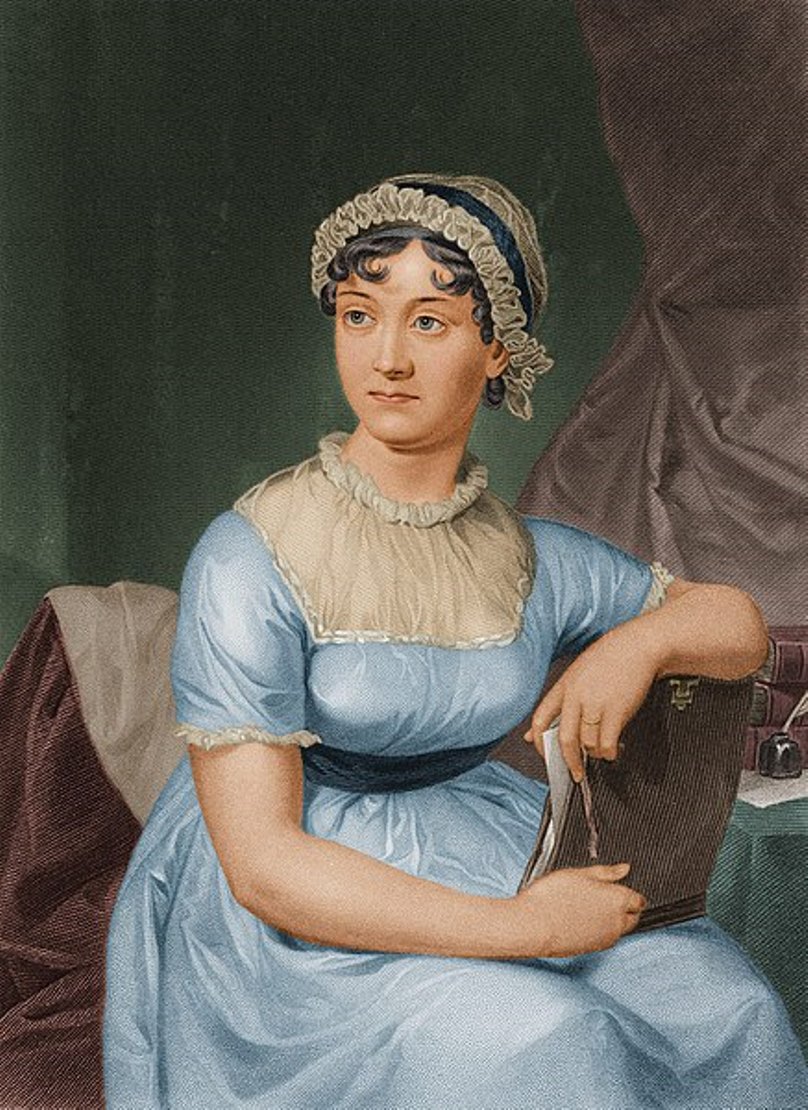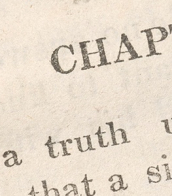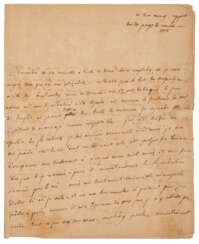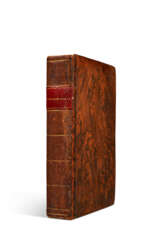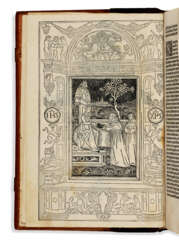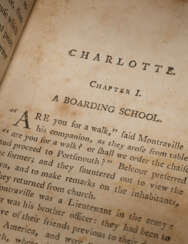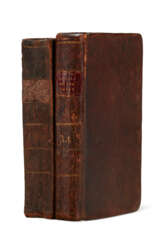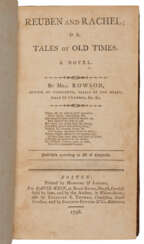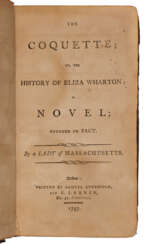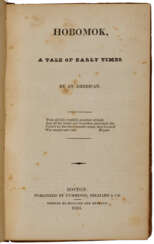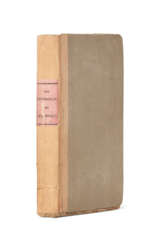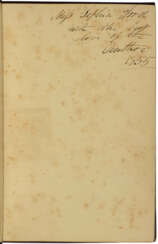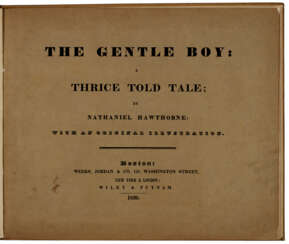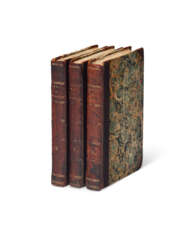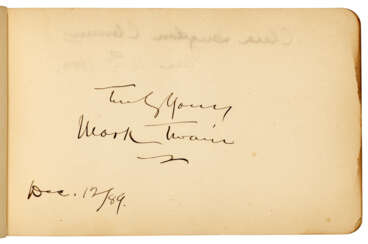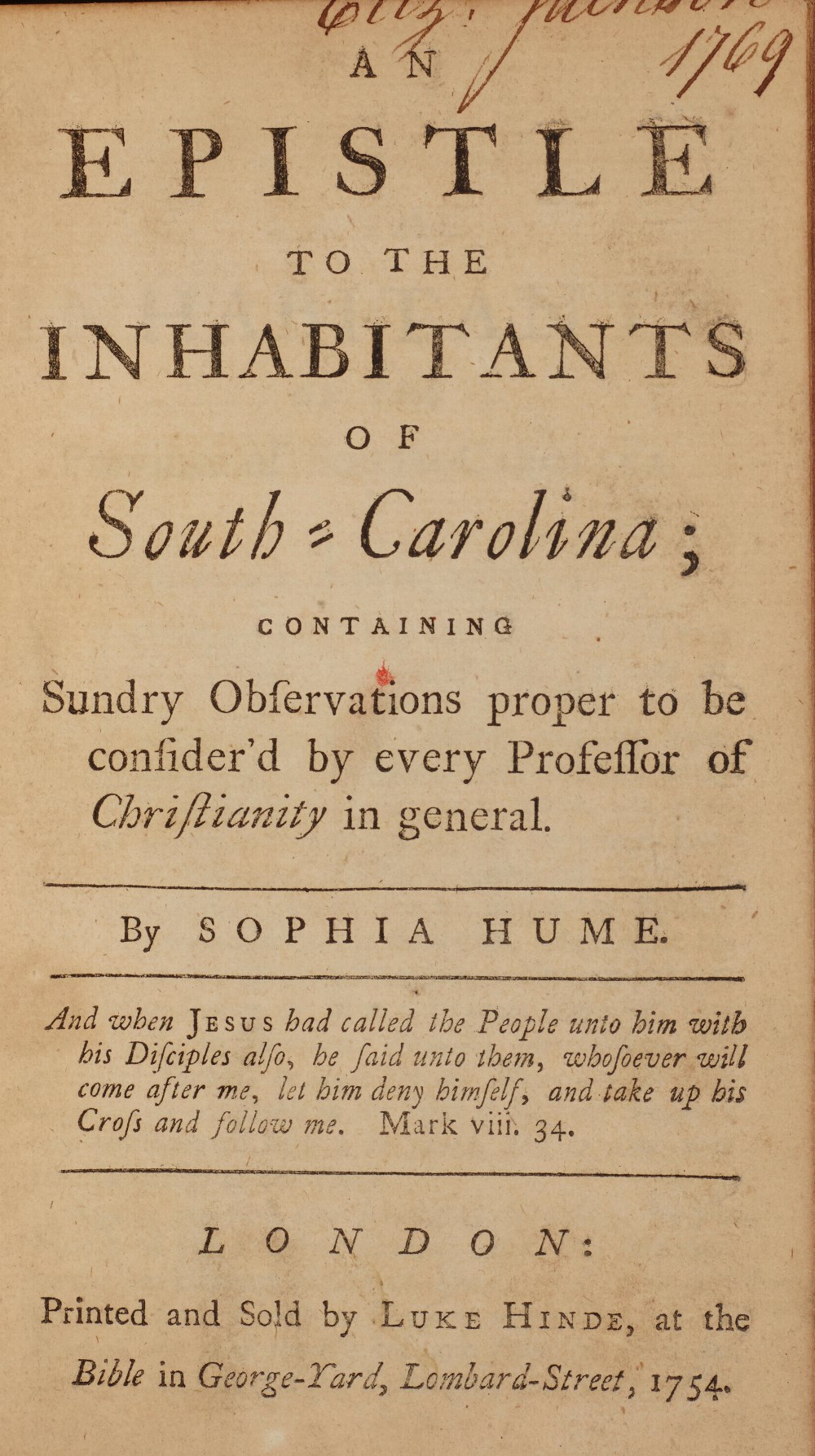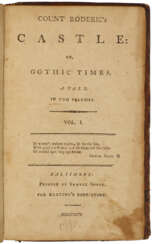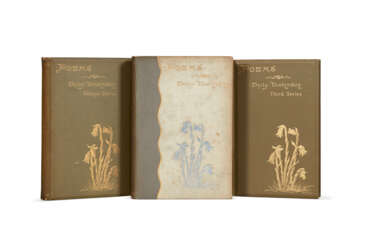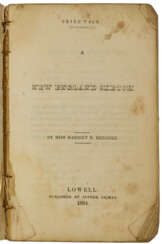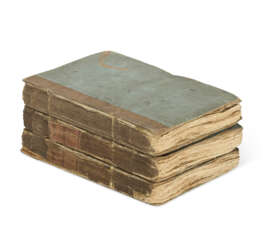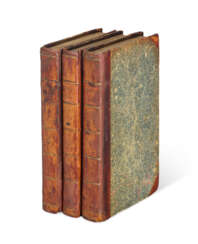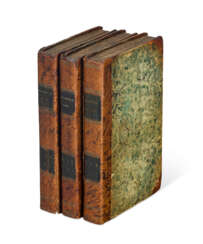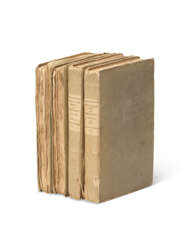frauengeschichte und literatur
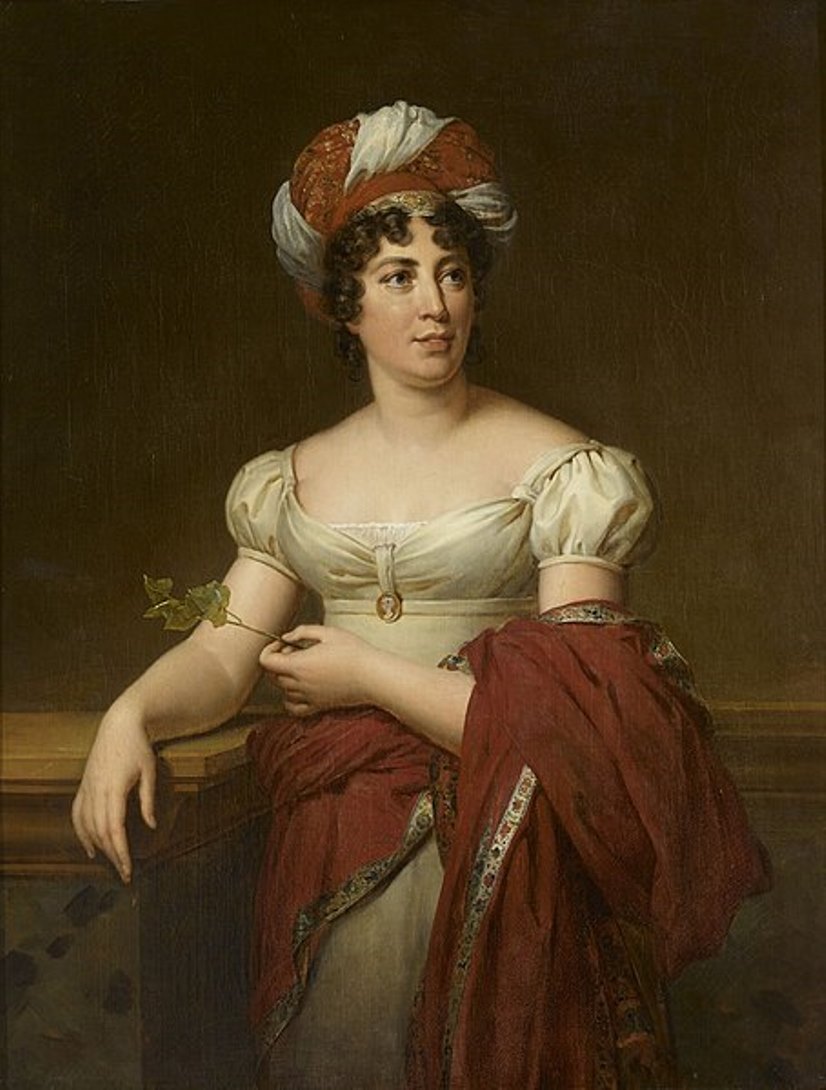
Anne-Louise-Germaine Necker, Baroness of Staël-Holstein, known as Madame de Staël, was a French writer, literary theorist, and publicist.
She was born into a Swiss family where her father was a banker and then finance minister to King Louis XVI, and her mother ran a brilliant literary and political salon in Paris where Voltaire, Diderot, and Hume frequented. Young Necker received a brilliant education, she absorbed the intellectual environment with great curiosity, becoming a witty and well-read conversationalist.
In 1786, she married the Swedish ambassador to Paris, Baron Eric de Staël-Holstein. It was a marriage of convenience, which ended in 1797 formal divorce.
Madame de Staël became known not only for her stunning and versatile works, but also for her enormous influence on the intellectual climate of that 19th century. During her lifetime she was known as a novelist, but she became much more famous as a political philosopher, literary critic, and theorist of Romanticism. Madame de Staël was an implacable opponent of Napoleon I and traveled around Europe for a decade during his reign from 1803. In 1810, the writer published one of her most famous and influential works, On Germany. She returned to Paris in 1814, after the fall of Napoleon, and wrote "Reflections on the Principal Events of the French Revolution."
In her travels, Madame de Staël met many politicians, artists and writers and was known for her cosmopolitanism and feminism. Madame de Staël epitomized the European culture of her time, combining ideas from neoclassicism to romanticism in her glittering salon for leading intellectuals.

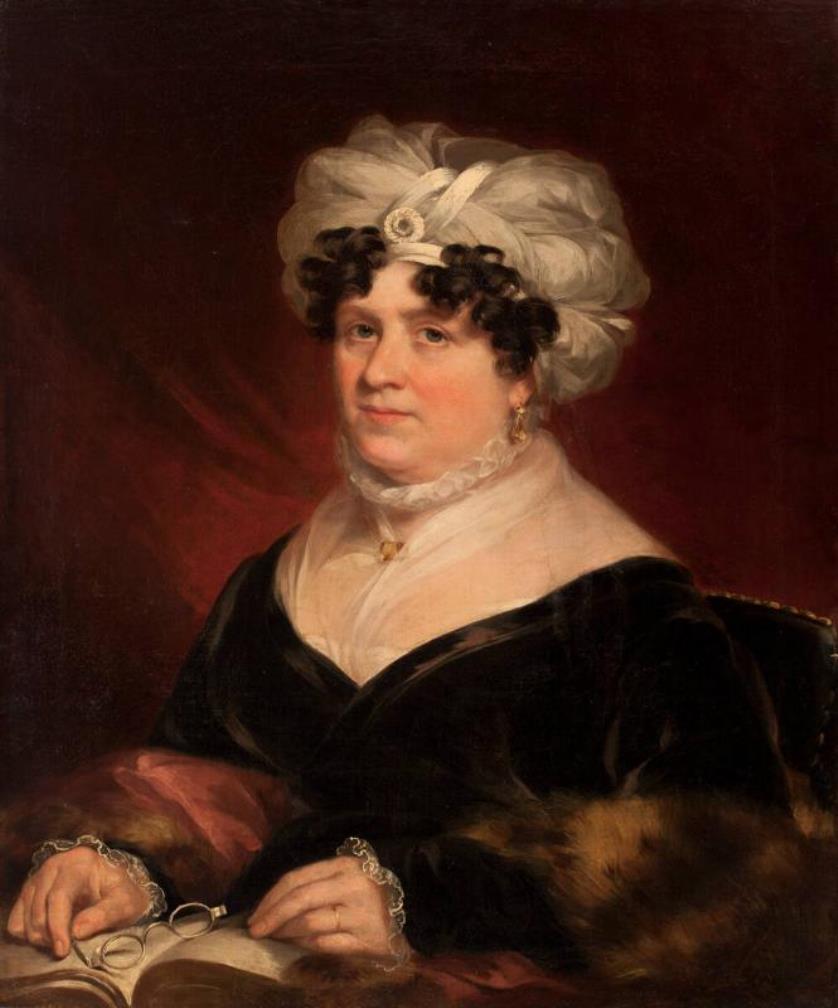
Susanna Rowson, née Haswell, was an American writer and poet, playwright, actress, and educator.
Susanna Haswell was the daughter of an officer in the Royal Navy. She published her first novel, Victoria, in 1786 and soon married businessman William Rowson. Susanna's greatest success was her first American bestseller, the novel Charlotte, A Tale of Truth (1791, in later editions under the title Charlotte Temple). This novel, a conventional sentimental story of seduction and remorse, was immensely popular and went through more than 200 editions.
In 1792 she became an actress and performed with her bankrupt husband in Scotland, as well as in Philadelphia, Baltimore, and Boston. In 1797, after retiring from the stage, Susanna opened the first "female academy" in Boston. Susanna Rowson also wrote many plays and musicals, and in doing so, helped to develop the performing arts in the United States. Later, she also edited the Boston Weekly Magazine, wrote geography and spelling textbooks, and moralizing manuals.


Susanna Rowson, née Haswell, was an American writer and poet, playwright, actress, and educator.
Susanna Haswell was the daughter of an officer in the Royal Navy. She published her first novel, Victoria, in 1786 and soon married businessman William Rowson. Susanna's greatest success was her first American bestseller, the novel Charlotte, A Tale of Truth (1791, in later editions under the title Charlotte Temple). This novel, a conventional sentimental story of seduction and remorse, was immensely popular and went through more than 200 editions.
In 1792 she became an actress and performed with her bankrupt husband in Scotland, as well as in Philadelphia, Baltimore, and Boston. In 1797, after retiring from the stage, Susanna opened the first "female academy" in Boston. Susanna Rowson also wrote many plays and musicals, and in doing so, helped to develop the performing arts in the United States. Later, she also edited the Boston Weekly Magazine, wrote geography and spelling textbooks, and moralizing manuals.


Susanna Rowson, née Haswell, was an American writer and poet, playwright, actress, and educator.
Susanna Haswell was the daughter of an officer in the Royal Navy. She published her first novel, Victoria, in 1786 and soon married businessman William Rowson. Susanna's greatest success was her first American bestseller, the novel Charlotte, A Tale of Truth (1791, in later editions under the title Charlotte Temple). This novel, a conventional sentimental story of seduction and remorse, was immensely popular and went through more than 200 editions.
In 1792 she became an actress and performed with her bankrupt husband in Scotland, as well as in Philadelphia, Baltimore, and Boston. In 1797, after retiring from the stage, Susanna opened the first "female academy" in Boston. Susanna Rowson also wrote many plays and musicals, and in doing so, helped to develop the performing arts in the United States. Later, she also edited the Boston Weekly Magazine, wrote geography and spelling textbooks, and moralizing manuals.


Hannah Webster Foster, born Hannah Webster, was an American writer.
Hannah received a good academic education for women and began writing political articles for Boston newspapers in the 1770s. In 1797, a sentimental novel she wrote, The Coquette, or the Story of Eliza Wharton, was published anonymously. The novel was based on a true story involving seduction, elopement, and a tragic death, and was a great success. The book was reprinted dozens of times, but it wasn't until the 1866 edition, many years after Foster's death, that the author's real name was placed on the title page for the first time.
Hannah Foster's second book, The Boarding School, or Lessons of a Female Educator to her Female Educators (1798), was devoted to the subject of education.

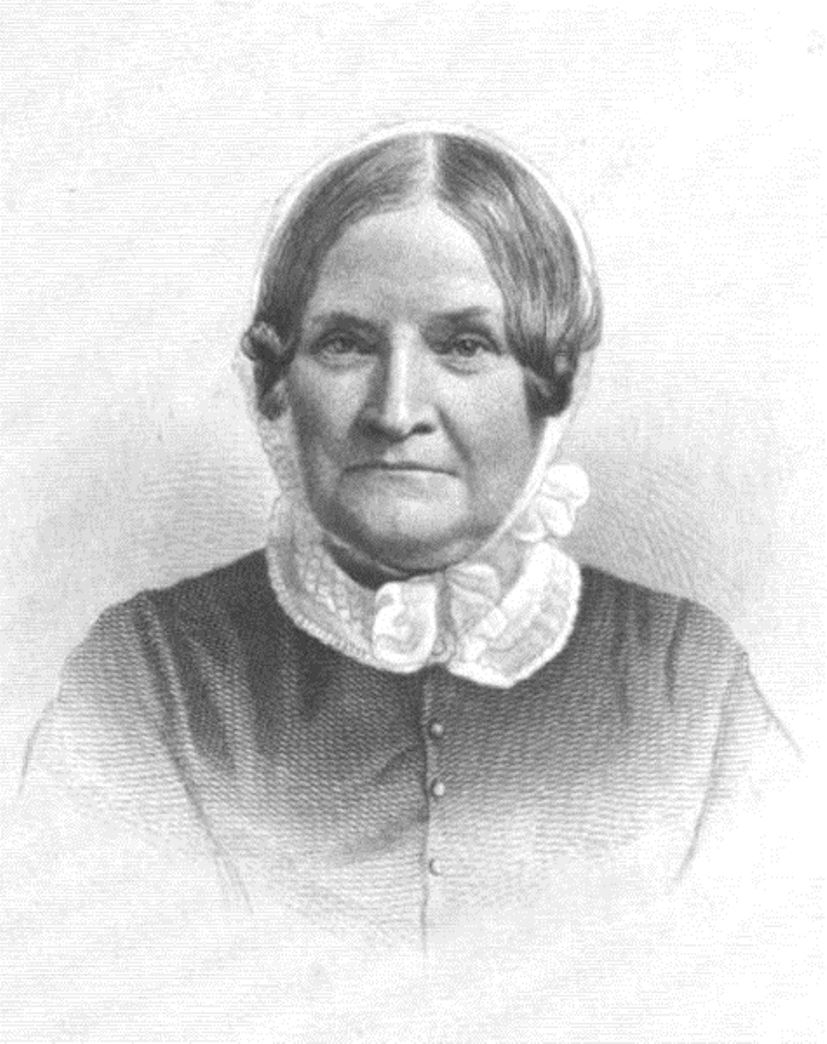
Lydia Maria Child, née Francis, is an American writer and journalist, women's rights and Indian rights activist, and a prominent abolitionist.
Lydia Francis was born into a family of abolitionists, which shaped her worldview. From the age of 18, she taught, wrote historical novels and in 1826 founded a periodical for children "Juvenile Miscellany".
Her first novel, Hobomock, was published in 1824 - set in colonial New England and based on the marriage of a white woman, Mary Conant, and a Native American named Hobomock. In 1833, Lydia Child published An Appeal in Favor of the Class of Americans Called Africans, which recounted the history of slavery and decried the educational and employment inequalities of the black population in the United States. As a result, she was expectedly publicly condemned and her magazine collapsed. But this book united and empowered like-minded people in the abolitionist movement.
On the subject of inequality, Lydia Child wrote throughout her life, and she also spoke out on behalf of Native American peoples. In 1861, "Incidents in the Life of a Slave Girl" was published. Her many books also include Flowers for Children (1844-47), Facts and Fictions (1846), The Freedmen's Book (1865), and An Address to the Indians (1868).

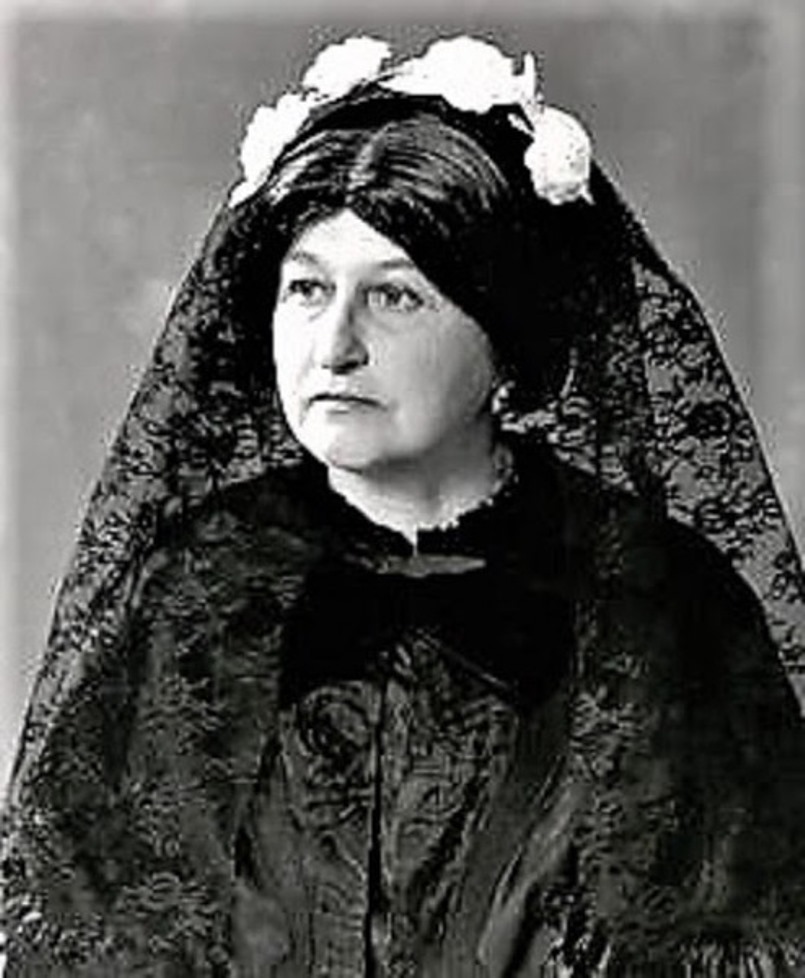
Anne Royall, née Newport, was an American writer, newspaper editor and traveler, one of the first women journalists in the United States.
After the death of her husband William Royall in 1813, Anne was left destitute, but she did not despair and completely changed her life. She was about 50 years old when she set out to travel the country and describe what she saw. She visited Baltimore, Philadelphia, New York City, Albany, Springfield, Hartford, Worcester, Boston, and New Haven. In each city, she asked respected citizens for interviews and subscriptions to her future books. She made detailed notes on each town's population, industry, physical description, local transportation, regional dialects, fashions, and the character of its inhabitants.
In all, Anne Royall wrote ten volumes of travel books. She was 57 years old when she published under a pseudonym her first book, The Traveler: Sketches of History, Life, and Manners in the United States (1826), which provides a unique look at American life in the early nineteenth century. His first novel, The Tennessean, was published in 1827, followed by several others.
At the age of 62, in her home in Washington, D.C., Royall began publishing her own newspaper, Paul Pry (1831-1836) and then The Huntress (1836-1854). She exposed bribery and corruption and made many powerful enemies. Nevertheless, it is known that the intrepid journalist during her life met and talked with every man who occupied the presidential chair, from George Washington to Abraham Lincoln.

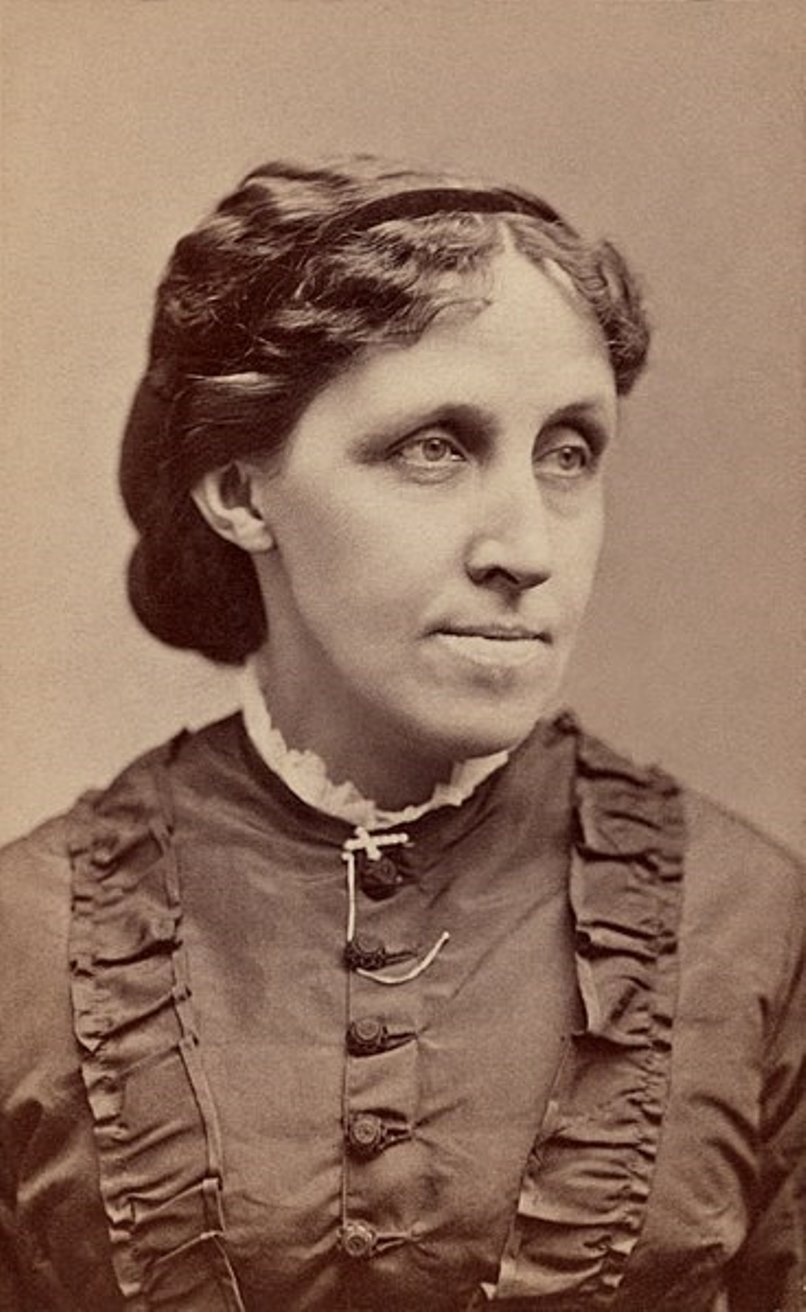
Louisa May Alcott was a 19th-century American writer.
Louisa, the daughter of transcendentalist Bronson Alcott, grew up in the company of Ralph Waldo Emerson, Theodore Parker, and Henry David Thoreau. Her education was largely under the guidance of her father, who, however, did not know how to properly provide for the family.
Louisa was forced to begin writing short stories and publishing in The Atlantic Monthly magazine. It could be said that need forced her to write an autobiographical book, Little Women (1868-69), which immediately became so popular that Louisa was finally able to pay off her debts. The book describes the domestic adventures of an optimistic New England family of modest means, tracing the different characters and destinies of four sisters as they grow up and face work, society, and marriage.
Alcott published sequels to the book, Little Men (1871) and Joe's Boys and What Came of Them (1886). There have been numerous films based on Little Women already in the 20th century, including the classic 1933 film starring Katharine Hepburn as Joe and the 2019 Greta Gerwig adaptation.
Alcott wrote other domestic stories based on her early experiences, and her books for younger children remain enduringly popular. Already in the 21st century, the gothic short stories and thrillers published by Alcott under a pseudonym between 1863 and 1869 have been collected and reprinted.

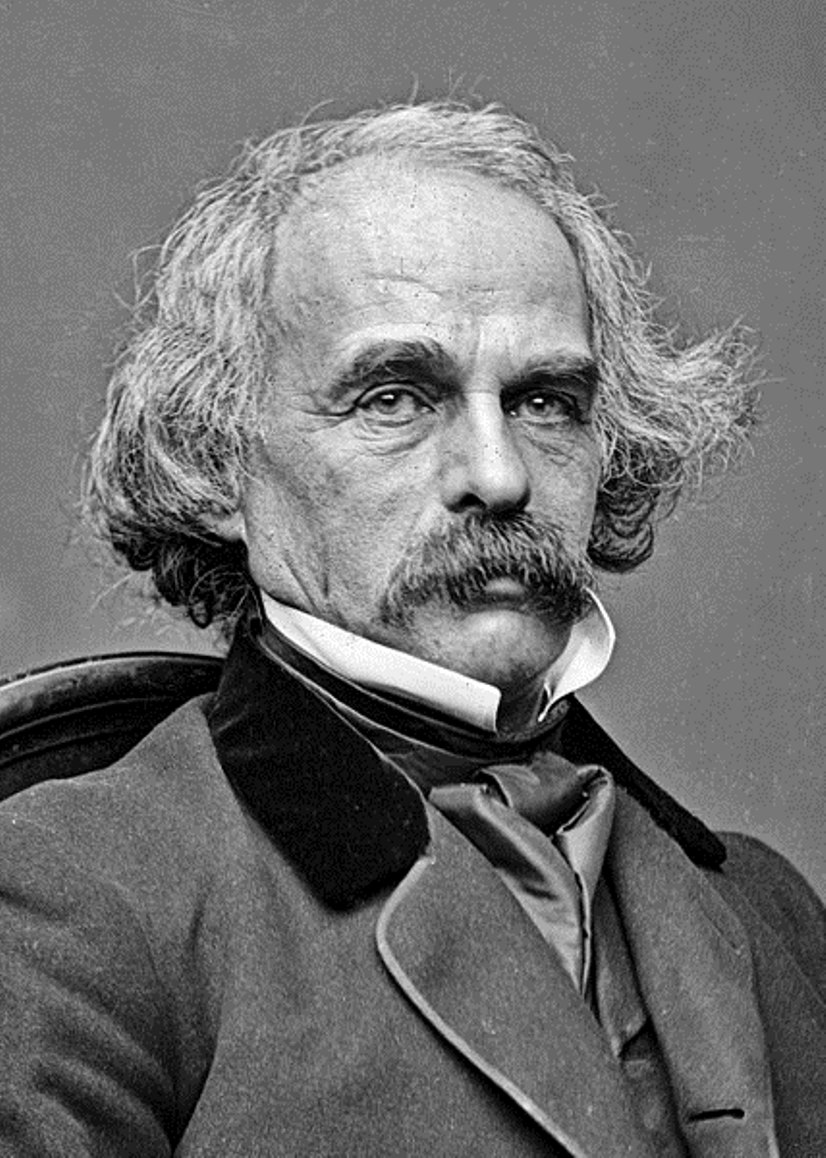
Nathaniel Hawthorne is an American writer and author.
Hawthorne is a recognized short story writer and a master of allegorical and symbolic narrative. One of the first fiction writers in American literature, he is best known for his works The Scarlet Letter (1850) and The House of Seven Gables (1851). Hawthorne's artistic works are considered part of the American Romantic movement and, in particular, of so-called dark Romanticism, a popular mid-19th-century fascination with the irrational, the demonic, and the grotesque.
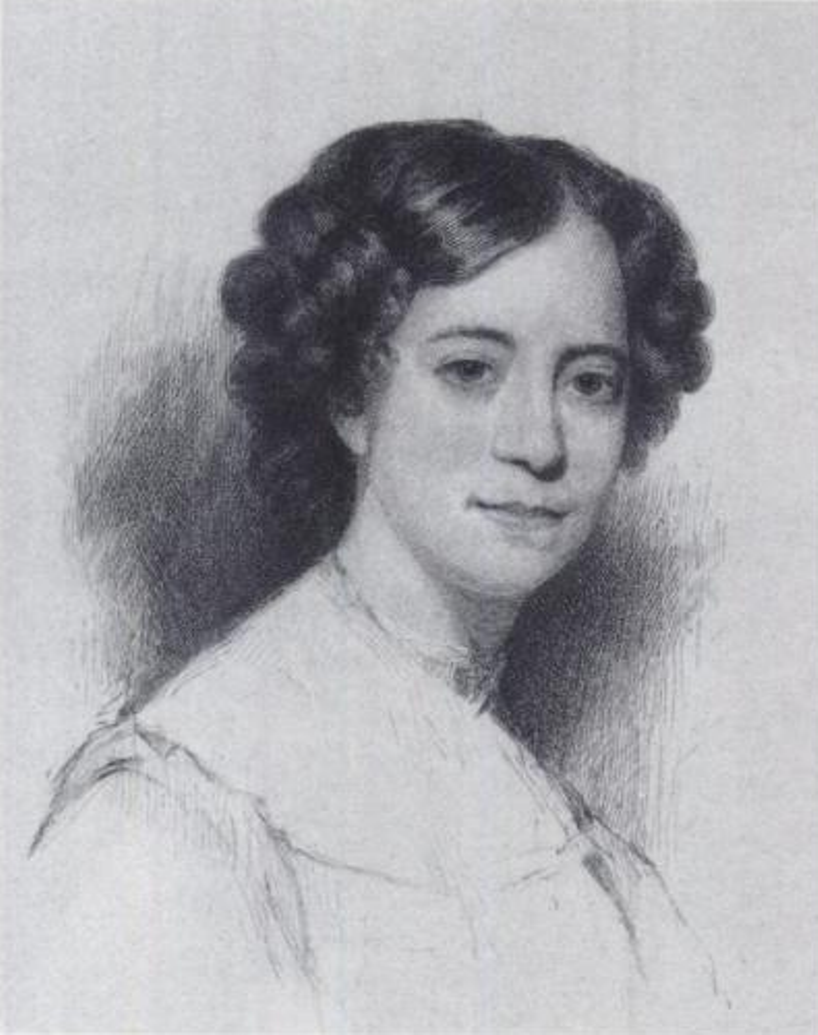
Sophia Amelia Hawthorne, née Peabody was an American artist and illustrator and writer.
Sophia Peabody is the wife of writer Nathaniel Hawthorne. Before her marriage, she was already an accomplished artist; during her life she also published articles, her diaries, and some of Nathaniel's notebooks, which she edited and published after his death.

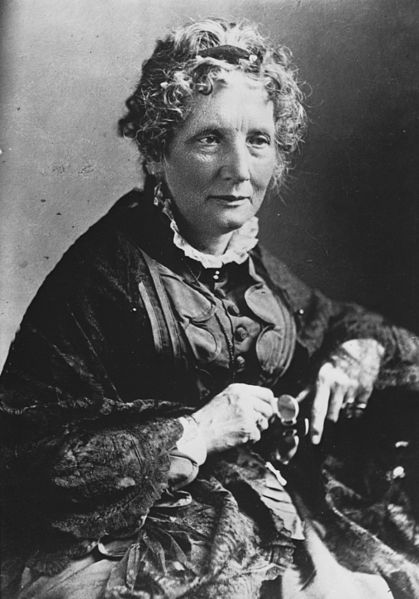
Harriet Beecher Stowe, full name Harriet Elisabeth Beecher Stowe, was an American writer and poet, an activist for the eradication of slavery in the country.
Beecher Stowe is the author of the world-famous novel Uncle Tom's Cabin. Published first in a newspaper and first published as a book in 1852, it aroused widespread anger in the country and galvanized the fight against slavery in the southern United States. This novel was later reprinted many times in all languages of the world and has been screened more than once.
In her youth, Beecher Stowe received an academic education, wrote poetry, notes and essays on social topics. In addition to "The Shack", she wrote several other novels and was engaged in teaching.

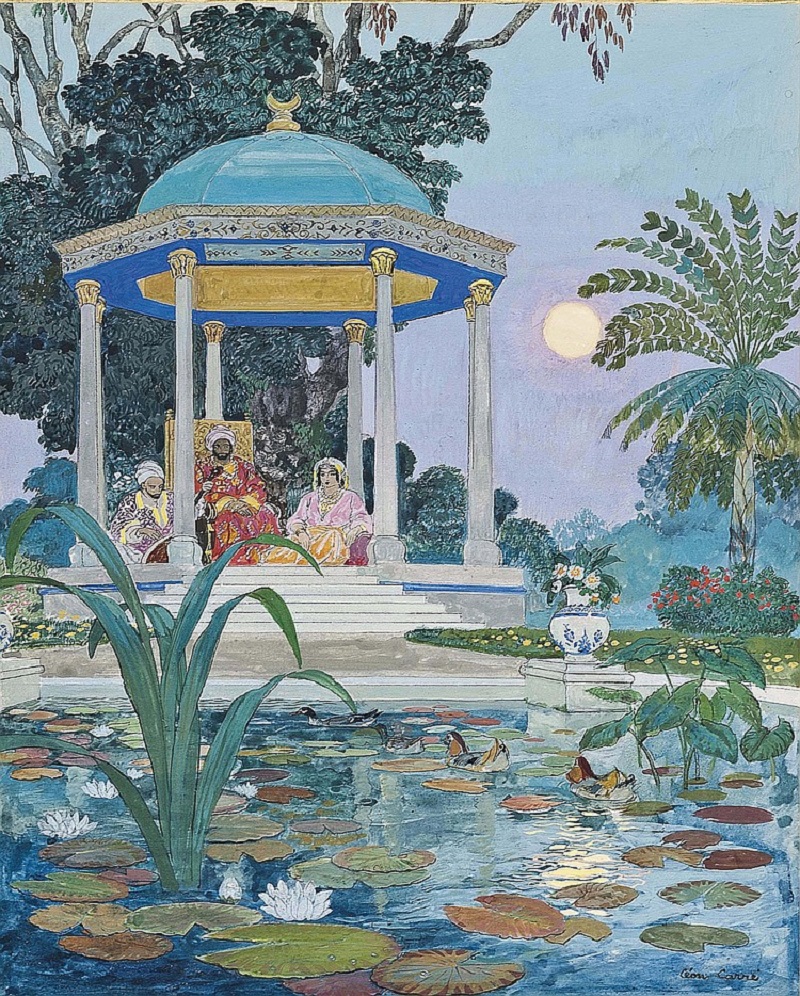
Léon Georges Jean-Baptiste Carré was a French Orientalist painter and illustrator known for his contribution to the Fauvist movement.
Carré's style was characterized by bright colours and bold strokes. He sought to express his emotions and convey the essence of the subject through intense and unnatural colours. Carré's paintings often depicted landscapes, still lifes and portraits.
Léon Carré also experimented with other artistic movements such as Cubism and Post-Impressionism. This allowed him to develop a unique artistic language which combined elements of different currents.

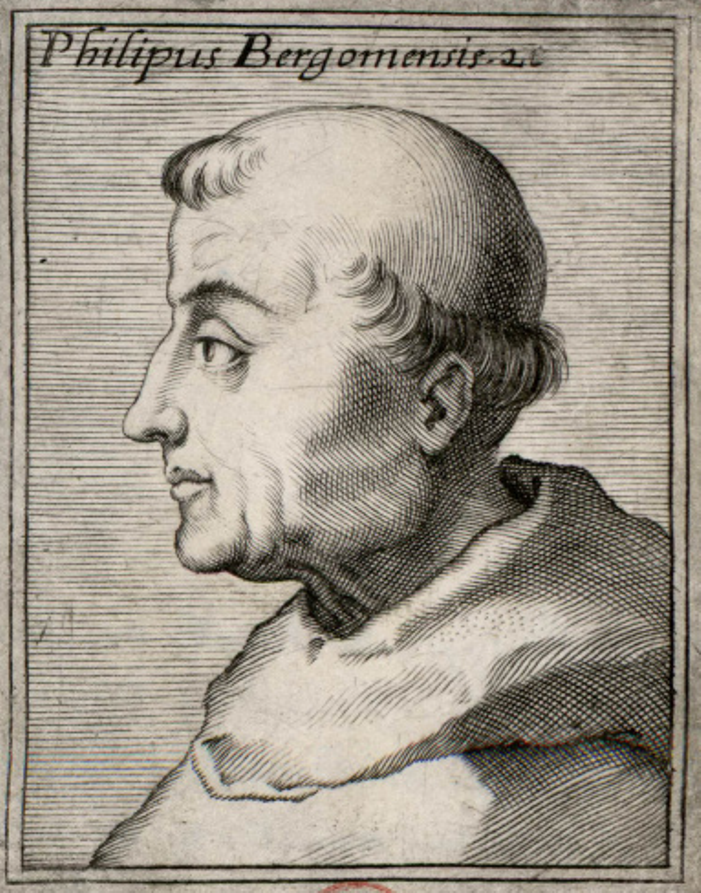
Jacopo Filippo di Bergamo, or Giacomo Filippo Forèsti (Latin: Iacobus Philippus Bergomensis) was an Italian Augustinian monk, theologian and chronicler.
Jacopo di Bergamo was born into a noble family, received his ecclesiastical education at the local monastery, and early showed a penchant for literary work. After traveling in Europe, he took the tonsure and was abbot of monasteries, engaged in their improvement.
He is known as the author of a number of significant early printed works, a chronicler and biblical scholar. His Supplementum chronicarum (1483) is a universal chronicle that survived many subsequent editions. And De claris mulieribus, published in 1497, contains the first account of the voyage of the discoverer Columbus.

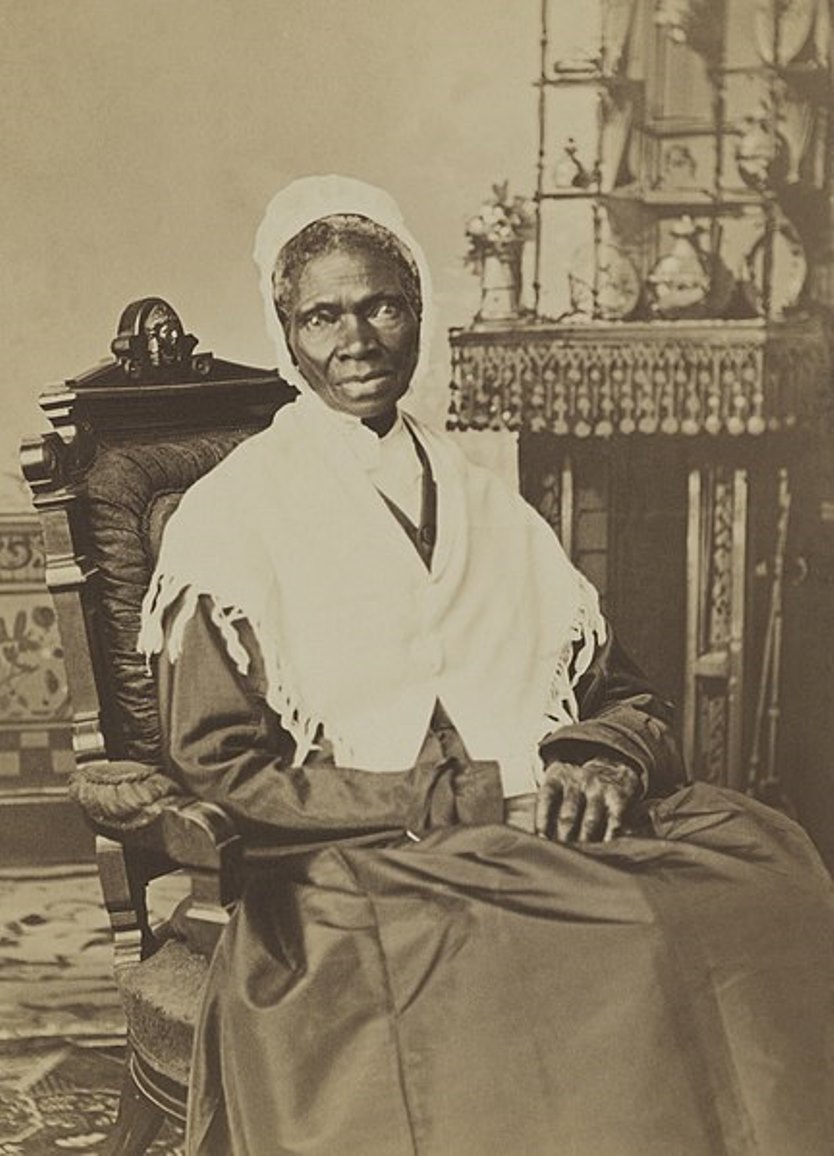
Sojourner Truth, born Isabella Baumfree, was an American abolitionist and feminist born into slavery.
Isabella Baumfree was born a slave in Dutch-speaking Ulster County, New York. She was bought and sold four times, subjected to hard physical labor and cruel punishments. As a teenager, she was united with another slave, by whom she had five children. In 1827 - a year before New York's slave emancipation law went into effect - Isabella and her daughter escaped to the nearby Van Wagener abolitionist family. This family bought her freedom for twenty dollars and helped her get her son back.
Isabella moved to New York City in 1828, where she worked for a local minister. By the early 1830s, she was involved in the religious actions sweeping the state and became a charismatic orator. In 1843, she claimed that the Spirit had called her to preach the truth and began calling herself Sojourner Truth. She advocated abolition, temperance, and civil and women's rights.
Being illiterate herself, Sojourner Truth dictated her story to Olive Gilbert, with whom she worked in the abolitionist Northampton Association. As a result, Sojourner Truth's Narrative of Sojourner Truth, a Northern slave freed from bodily slavery by the State of New York in 1828, was published in 1850. 1851 in Akron, Ohio, Truth gave her famous "Am I Not a Woman?" speech. She was a passionate fighter for all aspects of social justice and continued to travel the United States at the risk of her life giving speeches on women's rights, prison reform, and desegregation.

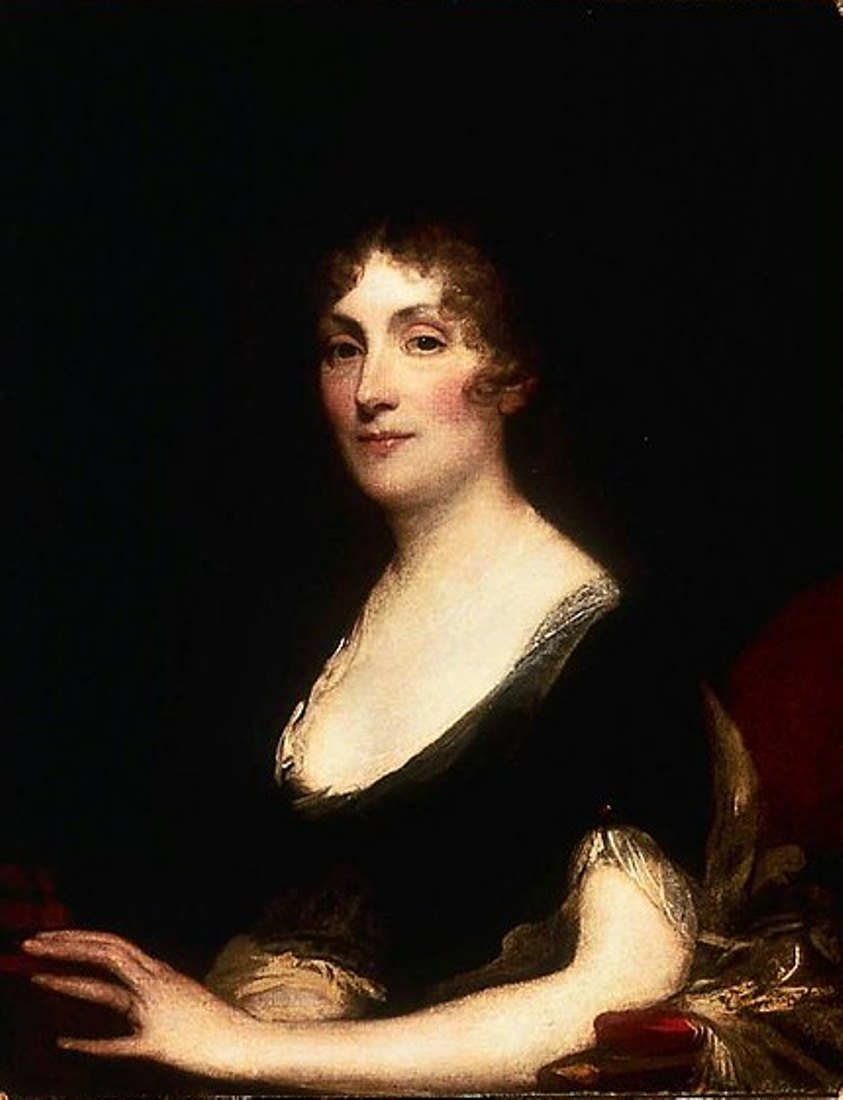
Sarah Wentworth Apthorp Morton was an American poet of the American Revolutionary period.
Sarah received a good education and early began writing poetry, the first of which was published under the pseudonyms Constance or Philenia. Frequent publications in periodicals made Filenia a prominent American poetess of her period, critics even in Europe paid attention to her.
Sarah Morton was called "American Sappho" by her contemporaries and was considered one of the finest women poets of the 18th century. She wrote long, sentimental, narrative poems that discuss the composition of the new nation, interracial relations, and heroism, both male and female. She also wrote about the virtues of freedom.

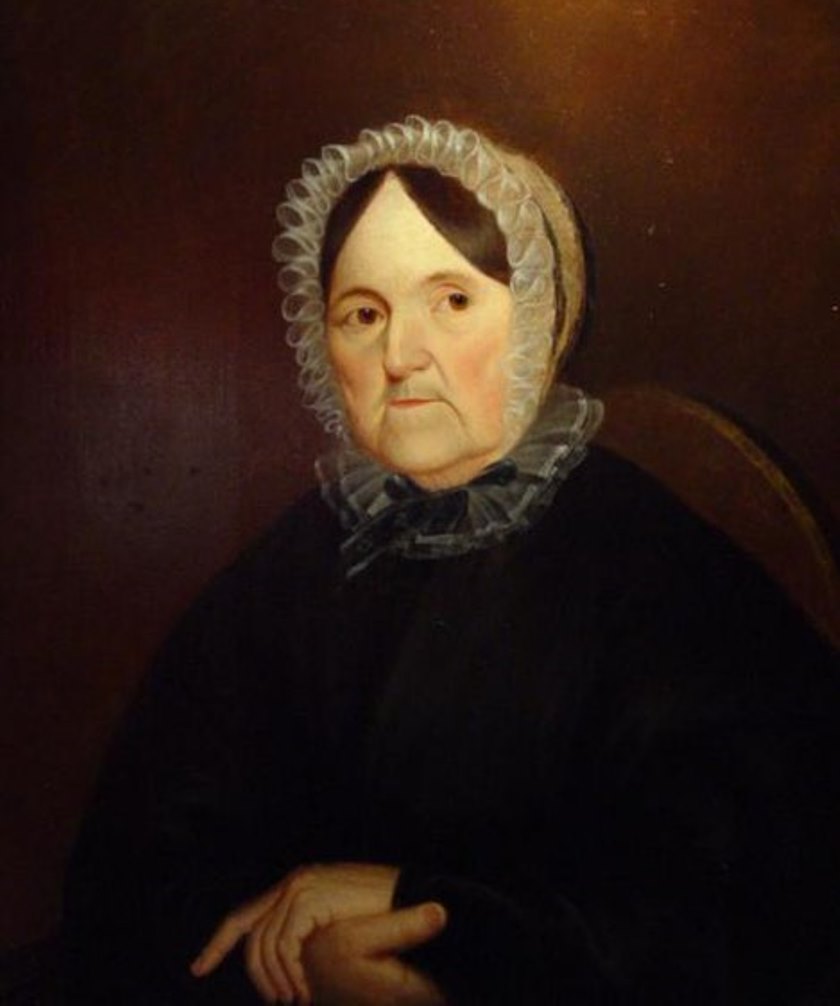
Sally Wood, full name Sarah Sayward Barrell Keating Wood, is an American author.
In her long life, Sally wrote four novels and one collection of fairy tales. She is considered the first American writer of gothic fiction. She signed her novels "The Lady from Massachusetts" or "The Lady from Maine". The first, entitled Julia and the Enlightened Baron, was published in 1800.

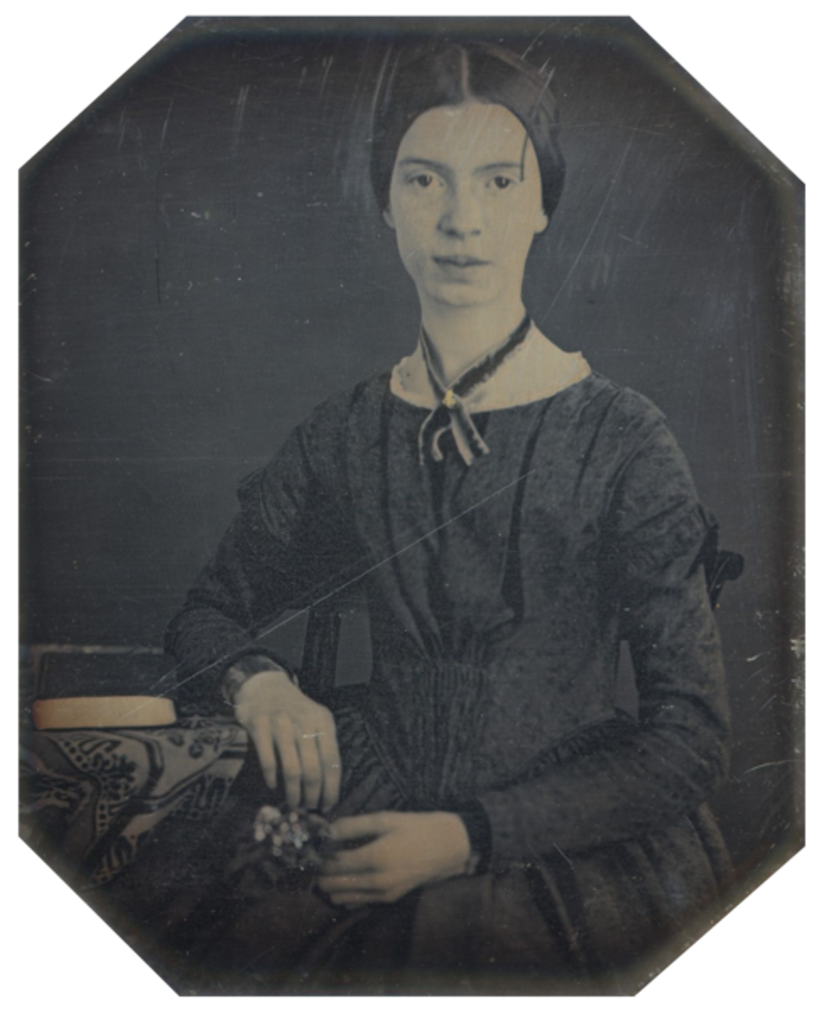
Emily Elizabeth Dickinson was a 19th-century American lyric poet.
Emily led a secluded and rather unusual lifestyle, preferring active correspondence instead of personal communication. In addition to many brilliant and witty letters to her family and friends, she wrote about two thousand poems during her lifetime, but only about ten were published during her lifetime.
Dickinson possessed an extraordinary brilliance of style and integrity of vision and, along with Walt Whitman, is today considered one of the two leading American poets of the nineteenth century. She easily ignored the usual rules of versification and even grammar, and in the intellectual content of her works showed exceptional courage and originality. It is known that the poetess was particularly impressed by the poetry of Ralph Waldo Emerson, and with Charles Wadsworth she corresponded.
Today, the work of Emily Dickinson is evaluated as a bright forerunner of modernism, it is widely studied in educational institutions in the United States and Europe.


Harriet Beecher Stowe, full name Harriet Elisabeth Beecher Stowe, was an American writer and poet, an activist for the eradication of slavery in the country.
Beecher Stowe is the author of the world-famous novel Uncle Tom's Cabin. Published first in a newspaper and first published as a book in 1852, it aroused widespread anger in the country and galvanized the fight against slavery in the southern United States. This novel was later reprinted many times in all languages of the world and has been screened more than once.
In her youth, Beecher Stowe received an academic education, wrote poetry, notes and essays on social topics. In addition to "The Shack", she wrote several other novels and was engaged in teaching.

